
The Blogger Outreach Equation
The author's views are entirely their own (excluding the unlikely event of hypnosis) and may not always reflect the views of Moz.
Does your team have a smiling face, who sits behind a desk and pitches content marketing all day? That's your sales team -- I mean, your blogger outreach team. Fortunately, your blogger outreach team is selling what people want: free, mutual-benefit content. To improve the placement rate of your blogger outreach team, you should leverage the following sales lessons as methods for proving value.
Let's start with a beginners sales principle, “AIDAS.” Do you see how this could apply to outreach?

I used the AIDAS principle as the foundation to create the Blogger Outreach Equation:

The Blogger Outreach Equation sets the foundation for establishing mutually beneficial relationships around content publishers care about: timely, engaging, and new information that speaks to their audience. Using this equation, I placed content with these top tier publishers more than once, and with multiple editors at these sites:

These placements were not sponsored posts; these occurred solely due to quality content ideas and relationship building. Now let’s break the Blogger Outreach Equation down further, so you can apply it, too!
I. Awareness (Social): how to use Twitter to break down barriers with publishers
For blogger outreach, the real power is using Twitter to break down barriers with publishers. For example, if someone like Brian Clark, Rand Fishkin, or Lisa Barone tweets you, you run full speed ahead to respond on Twitter. On the other hand, if an unknown user tweets you, it may raise an eyebrow, but that’s about it. Now, the epidemic: every power player out there is great at tweeting their friends. But how do you, the individual, get the attention of a publisher who doesn’t know your name?
Here are eleven core principles I’ve used to reach out to people I had no relationship with, and how I elicited a response.
1. We remind people that we’re real people

First and foremost, your outreach team should use Twitter to have a candid conversation, entirely unrelated to a pitch. This should happen weeks before you ever pitch. For example, from having this candid conversation, I learned Rae Hoffman lived in Florida for a decade, she now lives in TX, and we both have a deep hatred for palmetto bugs. The point? I’ve begun finding ways I could relate to her in a pitch. Don’t underestimate the power of little personal details; they make all the difference to publishers who on average receive 150 pitches a day.
2. Give credit to the writer
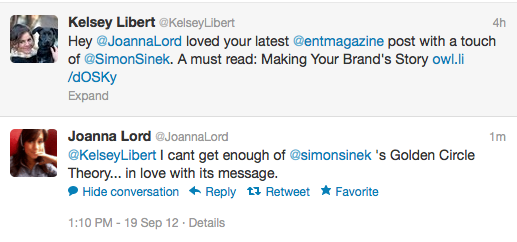
Entrepreneurs probably wouldn’t notice me retweeting one of a thousand articles on their site. However, the original author (and inspirational Mozzer) may notice. The lesson: tweet the article, but give credit to the author, not the publication. Even better, tweet the value you found in that post, while giving credit to both the writer and the publisher. This helps the writer look good to the publisher, which the author may appreciate even more.
3. Append your opinion, or sense of humor

Third, append your personality. We’re in Internet marketing, a land mine of personalities. Instead of hitting RT, take that article and add your sense of humor, charm or input. Ultimately this shows that you’re a brain, and not a bot.
4. Highlight quotes from the article

Retweeting a post title does not mean you read the post. Show you have a genuine interest by reading the authors content, and then pulling quotes or tips that you found useful. Avoid retweeting only a title when possible.
5. Be timely
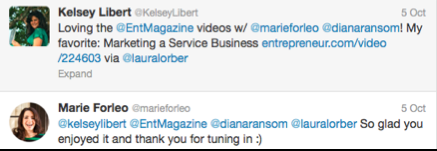
Fifth, be timely. We all have a lot on our plates, but if you’re reaching out over something that was featured within the last week, you have a better chance of standing out. Even better, pull something that you can relate to your pitch later.
6. Explain why you agree with their opinion

Similar to pulling quotes, you should mention if you agree with what the author is saying. After all, who doesn’t like to hear that they’re right? Only mention this if you actually spent time engaging with their content, otherwise you may be agreeing with the wrong point.
7. Provide an opposing position

Don’t be aggressive, but get the discussion going. Tread carefully here. If you disagree with something the author said, you could be jeopardizing a relationship. That being said, voicing an opposing position is a great conversation starter!
8. Ask questions about their content

Speaking of getting a discussion going, what better way than to ask questions? Expand upon their story by asking a question based on their content.
9. Get to know the author

Above and beyond anything else, you need to get to know the author. As mentioned earlier, candid conversations are a great for finding facts on your contacts. But, sometimes you can go straight for the gold an ask a personal question. Ego bait is a great way to learn fun facts about someone.
10. Follow up on your email

So you’ve been engaging for the past several weeks, and you’ve finally sent your pitch. No response. Don’t give up quite yet, if you didn’t get a response, it could be due to an overloaded inbox, or strict spam filters. Try reaching out on Twitter again to let the person know you’ve sent a message.
11. Use social media to find emails
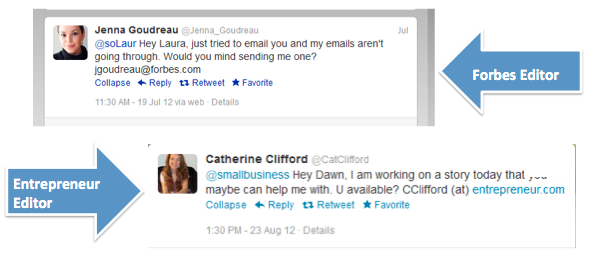
I’m a big fan of Cision and Buzzstream to manage relationships and build pitch lists. However, not all agencies or individuals have the money to afford these tools. First, I’d recommend using mailtester to see if you can guess the email; this works 70% of the time. If you still can’t guess their email, try a tweet, and offer that they DM you so they keep their email private. This also shows you care because you’re willing to follow them first.
II. Interest (Content): the secret of creating ideas that resonate with your audience
Seth Godin once said, “When everyone is playing the same game, your execution is critical.” Well, we’ve proven that everyone is playing the content marketing game; so, how are you executing differently?
For starters, you should be creating ideas that resonate with your audience, not with your anchor text. More often than not, publishers are using your brand name over your keyword anchor text, so instead of focusing your ideas around narrow anchor text, create ideas that appeal to a broad audience.
Dan and Chip Health wrote the book, “Made to Stick” in which they defined the six principles of sticky ideas. This book provides immense value that can be translated to content marketing, since sticky ideas are understandable, memorable, and effective in changing thought or behavior. Let’s dive into these sticky ideas!
1. Simplicity: How do you strip an idea to its core without turning it into a silly sound bite?

For starters, don’t create articles or infographics that are text heavy, lack data visualizations, and are poorly designed. You do want to create topics that cover simple ideas that provide value to a broad audience. Dan and Chip Heath define simple ideas as, “succinct enough to be sticky, meaningful enough to make a difference.” Analogies are also great, because you’re comparing new concepts to something already known, which makes your message easier to understand.
2. Unexpectedness: how do you capture peoples’ attention…and hold it?
For our ideas to endure, not only must we must generate interest and curiosity, but we must also have our audience experience the "aha moment." Albert Einstein encapsulates this core principle with the following quote,
"I have no special talents, I am only passionately curious."
I identify with this, as does much of humankind. But, why? Professors George Loewenstein of Carnegie Melon University explains it as the "information gap theory of curiosity," which creates curiosity on demand. This theory is based on an innate human behavior that’s triggered when people feel there is a gap between what they know, and what they want to know. When they feel this gap they are compelled to fill it by taking action, such as reading, engaging, and spreading your content.
Therefore, your content needs to create knowledge gaps. HBR is great at doing this by creating curiosity based headlines and studies that disprove a common thought. You can do this, too!
3. Concreteness: how do you help people understand your idea and remember it much later?
Data is concrete and memorable, and an abstraction or idea is not. Use actual events and case studies to make your ideas more concrete.
4. Credibility: how do you get people to believe your idea?
What you think is credible might include doctors, lawyers, and The Wall Street Journal. However, what is actually most credible is you, the audience. Let's admit it: humans can be narcissists sometimes. More often than not, we believe our knowledge is the most credible source. Our knowledge is credible because we learned it personally, and it wasn't hearsay or outdated. So, what we have to do is involve our audience in the learning process of our message. Instead of shouting an idea at them, we should engage the audience by having them be a part of the content learning process. The goal is to put your audience into the story with powerful details and testable credentials. Microsites are very effective at building credibility with the audience.
5. Emotional: how do you get people to care about your idea?
Two Wharton marketing professors tangentially answered this question, when they pondered, “Why are certain pieces of online content more viral than others?” The study took a psychological approach to understanding diffusion through emotion. Using unique data set of all the New York Times articles published over a three-month period, the two professors examined how emotion shapes virility.
The takeaway? When generating viral content ideas, you need to focus more on “positive content emotions” such as awe, anxiety, and anger, and less ideas on “negative content emotions” such as sadness.
6. Stories: how do you get people to act on your idea?
The best journalists create stories that demonstrate what facts mean to people. This is what you need to do with your content. For example, Subway released two campaigns that had one identical message: “We’ve got 7 new subs with 6 grams of fat!”
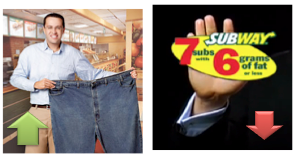
Can you guess which one was more successful? It was the one that created a story, not just data.
Jared’s Story:
- Simple: Visual message, man holding his old “fat jeans”
- Unexpected: Man loses 245 pounds in a year, eating fast food
- Concrete: This image serves as testimony, and clings to your memory
- Emotional: His weight was debilitating
- Story: It’s Jared’s fight for his life
Most stories naturally come with the six principles of sticky ideas, so if you’re trying to hit it out of the ballpark, go for a story.
III. Desire (Mutual Benefit): 8 ways content marketing should establish a mutual benefit with publishers
Now you have the foundation for sticky ideas that will resonate with your audience and naturally build links, the next step is to create desire by proving the mutual benefit to the publisher. Make sure you have at least one, but preferably several of these mutual benefits before pitching a publisher:
- Save your best, for the best. Offer the exclusive, since 99% of all top tier publishers will only take an exclusive.
- Provide case studies of your previous content that shows your ability to create viral stories, which would benefit the publisher’s engagement.
- Try to use these top tier publishers as one of your main sources in your content. Tread carefully to ensure that you’re not listing a bunch of competitive news outlets in one piece of content.
- If the editor you want to place content with is an expert in that field, then try to use that individual as a source. Then, create a subject lines that appeal to ego, such as “Title of Content – [Exclusive] Source: Author Name.”
- Before you ever start creating your content, ask the publisher what type of content they’re interested in. This guarantees you’re filling their needs, too.
- Offer to create co-branded content with your client’s name and the publishers name.
- Cover timely and breaking news stories.
- Go against the grain of a popular position to evoke engagement on the blog.
IV. Action + Satisfaction: how outreach can apply sales lessons to deliver value to publishers
We’re in the home stretch! In this final step, we’ll create your winning pitch with the core principles of the buyer decision making process:

Step 1: Create need recognition
Your first initiative is to find gaps in the publishers content that you could fill with your content. When you introduce your content, your first step is to show why the publisher's audience would want to see your content. You can do this by providing an advantage such as:
- “I have an exclusive...[study, interview, video, etc]”
- “When your blog previously covered this topic, the social engagement was very high - I think your readership would be very engaged with this follow up."
- “This piece covers a breaking news topic... ”
Step 2: Fill the information search
Once the problem is realized, the editor will launch into an "information search" to see if the content is already covered on the site. This is where you help fill their void with your valuable content. Do this by showing how the publisher doesn't already cover this content, but should, by providing proof from within your content, such as:
- "Your audience knows ABC about this topic, but did they know XYZ (an interesting fact pulled from your content)."
- “You covered ABC here, let me show you how my content expands on this."
- "I've previously worked with __ at your publication. Check out the success of our previous partnership (provide link to content within their blog)."
Step 3: Provide a search for alternatives
More often than not, you'll have multiple pieces of content that you're pitching for one client. In this case, provide the publisher with 2-3 pieces of content, so they can choose the content that best matches their audience. This gives the editor a greater sense of ownership.
Step 4: Assist in the evaluation of alternatives
Publishers spend seconds, not minutes, reading your email pitch. Help them evaluate it on the fly by providing 1-2 interesting facts or quotes, pulled from your content. Continue to show how your content will meet their demands.
Step 5: Ask for the purchase decision
You can't make a sale without asking for it. You should always close an email by asking for a response, such as:
- Closing on choice: "Do you prefer article one or two?"
- Series of acceptances: "Is this a topic your readership is highly engaged in?" “Does this content cover information that is timely and new?" “Would you be interested in partnering for the exclusive?”
- Impending event: "I’d love to offer you the exclusive, but if I don't hear from you, I can only hold it for a week."
- Trial order: "Would you like to see how this post does, and if it's a hit, we can partner on a full time basis?"
Step 6: Follow Up on the Post Purchase Evaluation
To avoid cognitive dissonance, you want to follow up with the publisher on the success points of your content. It's imperative that you continue to build these relationships for future partnerships.
Conclusion
If you want your outreach team banned from an inbox, focus on anchor text, landing pages, and narrow ideas. This style of SEO is dead, at least in the world of blogger outreach. In order for blogger outreach to be successful, you need to provide more of a mutual benefit to publishers than your clients. Otherwise, you're taking the best tactic for link building, and turning it back into slimy SEO. Instead, apply the Blogger Outreach Equation, and you'll increase your chances for building mutual benefit relationships with high authority publishers. Thus, happy publisher, happy client, and happy blogger outreach team.
The information in this post was gathered as a supplement from my PubCon presenation, on Blogger Outreach and Relationship Building.

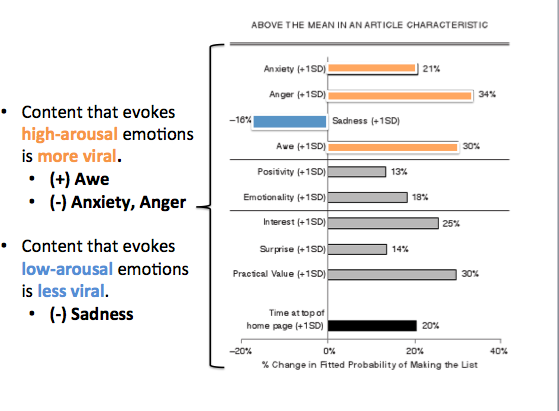



Comments
Please keep your comments TAGFEE by following the community etiquette
Comments are closed. Got a burning question? Head to our Q&A section to start a new conversation.